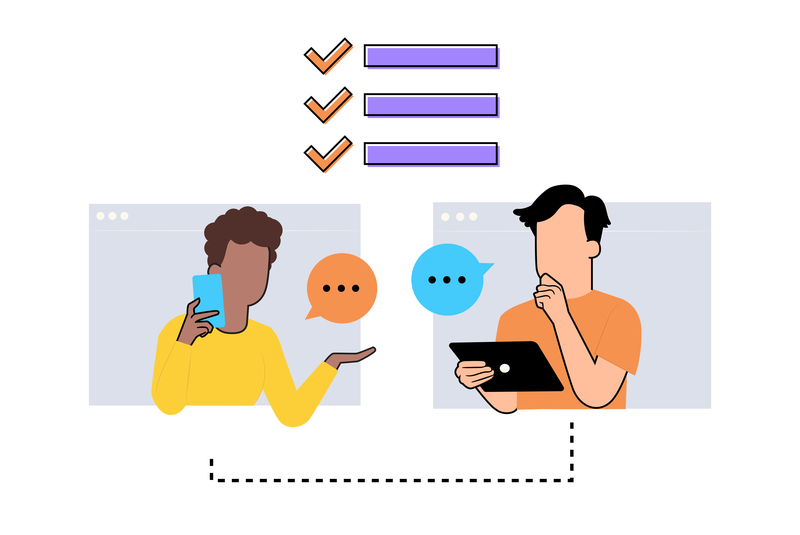The American economy has grown. This means that numerous industries host a multitude of businesses. New enterprises are continuously being founded, creating new job opportunities for employees. Every month, millions of people begin searching for employment, leading to intense competition among job seekers. These factors contribute to making the process of candidate searching very challenging and prolonged.
This is also quite expensive. For every employer, the costs related to an employee include not only the salary but also the expenses involved in the hiring process. The cost of hiring a specialist can be broken down into recruitment expenses and the company's losses during the specialist's absence. The recruitment process itself can take up to 6 weeks, but that's just the initial phase. The period of training and adapting a new employee is typically considered to be about half a year. Average hiring costs start at $4,000, not including salary.
So, the hiring process is long, challenging, and expensive. From the moment of opening the position to hiring a new employee, a lot happens. But what exactly? Let’s take a look at stages both you and an employer go through, from the perspective of an employer.
- The recruitment process is not as simple as it might appear
- It involves multiple stages and requires a significant amount of effort and financial investment
- Excluding the salary, hiring costs start from an average $4,000
Common stages of recruitment
Okay, a company creates a vacancy on different job search services to start receiving applications for a new position. We all know that. Then they call suitable applicants to invite to an interview, right? No, not really. Here are the common stages every employer experiences:
Applications

Candidates start applying. There is just one job opening and more than a hundred people apply, on average. Depending on the industry and the position level, the numbers can go up to 250 people per opening. How are they able to choose?
ATS analysis

For a machine, it is relatively easy to sift through all the applicants and determine who is a suitable candidate and who is not. The system searches for specific keywords that were mentioned in the job opening description. Thus, missing these keywords is much more crucial than simply being an unsuitable candidate. According to Harvard Business Review, 88% of employers agree that they can overlook a qualified candidate due to the use of an ATS.
Shortlisting large

It takes a professional recruiter about one minute to look through your resume. Then, they start conducting a screening interview. Screening interviews usually include:
- general questions about a candidate and their work experience
- information about the company and the position
- some tricks recruiters really like (e.g.: they give you an abstract imaginary situation with a problem that you have to solve, where they evaluate your communication skills)
Most of such interviews are conducted by specialists from the Human Resources department. They are professionals, but in recruiting. It is a common situation when a candidate starts asking more detailed questions about the position that a recruiter is unable to answer. So if you reverse it, they are not competent enough to evaluate your answers to professional questions, right?
During this stage, about two-thirds of candidates got shortlisted after a 15-minute talk. It’s about 30 people out of a hundred.
In-person interview

If you pass a screening interview, you’ll receive an invitation to the first in-person interview. In this interview, you’ll be asked more detailed and professional questions, where the recruiter possesses information about your work experience and the position. The successful outcome of this stage mostly depends on the candidate and their skills. Getting prepared for the questions you may be asked is essential.
Testing

There may be an additional stage - qualification test. An employer may want to check your knowledge and abilities by providing a test or a sample task. It is the first stage where you can showcase your attitude toward work, hard skills, and extensive work experience. However, not every company provides such tests. Plus, to take the test, you need to pass the previous two stages. Some very good professionals may simply become unlucky. It’s already too late to stand out. You can’t make the first impression twice.
After these two stages, out of 30 applicants, only 2 to 5 people are left.
Semi-finals

Here comes the second in-person interview. It usually takes a couple of days for a recruiter to decide whether you will be invited or not. At this stage, you will probably talk to a manager of your department, which is great, but you’ll have to make a positive impression again. Before the interview, a manager just briefly looks through the candidates’ resumes. Another thing is that around you there are only well-qualified specialists (or very lucky people) you need to compete with at a high level. For many people, it is the most nerve-wrecking stage of the process.
Final stage – Offer

We’ve started with the fact that there is only one position, so the offer will also be just one. That means only one person out of more than a hundred.
As you can see, all stages are important and aimed at finding ‘The One’. Do they evaluate every candidate equally and fairly? At some point, yes, they do. However, we’ve mentioned some problems you may face going through these stages. How can you decrease the chance of being unnoticed or unfairly dropped? We’ll give you some advice.
- There are typically 100-250 applicants for one job opening
- 88% of employers believe that an ATS may eliminate a qualified candidate
- Screening interviews usually precede in-person interviews but are considered ineffective, raising questions about their necessity
- The primary stages of communication between an employer and a candidate are in-person interviews, which can range from one to four rounds, depending on the company
- Throughout the recruitment process, only 1 to 2 candidates out of 100-250 applicants receive a job offer
How to avoid problems of recruitment
The hiring process involves two parties: you and an employer. So, fortunately on not, not everything depends on you. There are several things you have the control of.
- You are responsible for improving your skills and keeping up with the latest trends in your field. Being simply better than others plays a role.
- Open-mindedness in terms of job-seeking means an ability to look at various job openings from different perspectives. Every cloud has a silver lining.
- Make the right first impression. Your personality matters more than you might think, so showing it to an employer will benefit you a lot. We’ll explain to you how to do that.
The problems of the later stages may only be solved by addressing those of the earlier ones. If you are lucky, you can make a positive first impression at the application stage. But we offer you not to rely on luck. There is a more dependable approach - video resume.
A video resume is a recording of you answering questions about your work experience, soft and hard skills, and, most importantly, yourself. These answers will convey much more about you in general than a 5-minute phone call or a written sample resume. Let’s look how video resumes can help you solve problems we’ve discussed earlier:
- Applications. There are about a hundred applicants, right? Imagine a situation where you are the only one sending a video resume instead of a traditional written text. You’ll be noticed for sure.
- Shortlisting large. Recruiters provide screening interviews to get to know you. However, through a video resume, you’ve already introduced yourself much more effectively.
- In-person interview. In the first in-person interview, your task is to convince a recruiter that you’re worth the position. As we’ve mentioned before, you can make it way easier if you start by establishing a stronger foundation. This includes the fact that you’ve already prepared for some of the questions by making a video resume.
- Testing. The qualification test is not a problem itself. But for a lot of people it’s really hard to simply get to this stage. Making a positive first impression will increase your chances of doing it.
- Semi-finals. In the second in-person interview, there is a high possibility of meeting your immediate supervisor, who has checked your video resume and possesses knowledge about your capabilities much more than about others.
- Offer. You are here because you’ve paved another way to receive this offer. And this way is remarkable.
Now that you understand all the benefits a video resume can provide, where should you start? What questions should you answer? On uhired we’ll help you begin your successful job-seeking.
- In a recruiting process, there are a few things you can control: being a suitable candidate, keeping your mind open to diverse opportunities, and the impression you create on a potential employer
- A video resume could become a one-size-fits-all solution, capable of impressing much more than a well-written resume
- At every stage of recruitment, having a video resume can be beneficial
You’ll be ready with uhired
Creating a video resume on the uhired platform is much easier than doing it yourself. We generate a list of relevant questions for a video resume based on the profile you fill out. After you record your answers and save them on the platform, we compile one video from your answers and add chapters for easy navigation.
We are here to help candidates and employers connect. Come to uhired and find your dream job.
